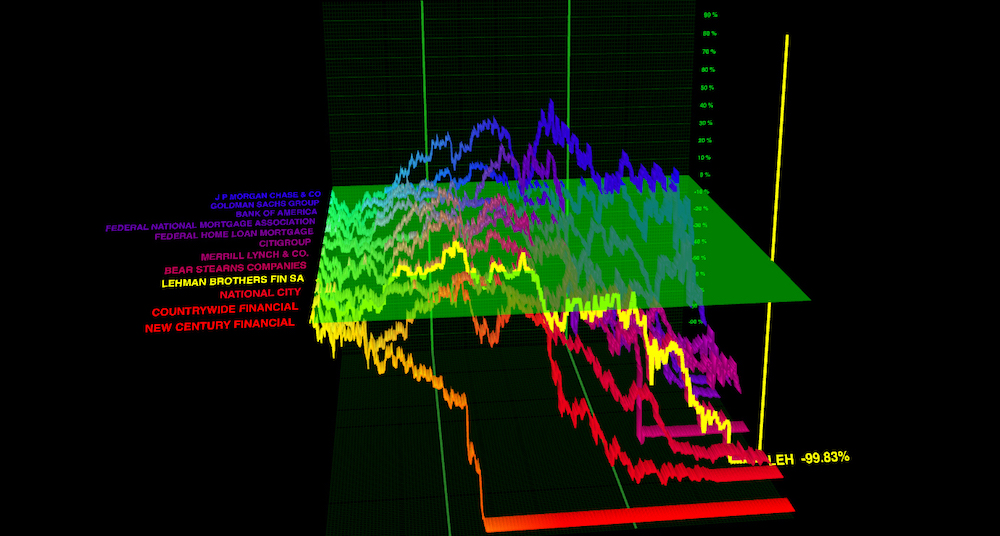The great financial crisis with its peak in the fall of 2008 was not inevitable; it could and should have been prevented. Had it been, the economy would not have lost trillions of dollars, millions of Americans would have been spared eviction and unemployment, and the U.S.’s vibrant financial sector would have remained intact. But few saw a crisis of these proportions coming: Almost no one raised red flags when the first mortgage originators filed for bankruptcy, or when a roster of medium-sized banks experienced liquidity shortage. Even when margin calls began putting pressure even on larger financial firms, and credit lines that had been put in place to provide only short-term, stopgap measures were running hot, almost no one sounded alarms. Every incident was eyed in isolation even as, slowly but surely, stress built in the system as a whole—as it always does in finance—from the weaker, less resilient periphery of mortgage originators to the very core of storied investment banks whose ultimate fall threatened to bring down the entire system.
The 16th of March of this year will mark the 10-year anniversary of the marriage between Bear Stearns and JP Morgan Chase, which was arranged and co-financed by the Federal Reserve. It was by no means the beginning of the crisis; rather, it marked the beginning of the end. It was the final stage in which financial firms at the core were still able to keep their heads above water; however, fearing for their own survival, they would extend another lifeline to fellow banks only with government help. By September, it took a massive government bailout to prevent a financial meltdown.
Of course, the government could have stepped aside and allowed the banking and finance system to self-destruct. Members of Congress who voted against the Troubled Asset Release Program (TARP) Act at the time certainly thought it should. On the upside, allowing it to implode would have created a much cleaner slate for rebuilding finance on sound footing—just as the collapse of the financial system in the 1930s had. On the downside, no one could say for sure whether the system would recover and what it would cost to get there. Fearing the abyss, the Fed, the Treasury and Congress stepped in and did what it took (to paraphrase then-Fed Chairman Ben Bernanke) to stabilize the financial system, which has since returned to making huge profits.
No good deed goes unpunished. Instead of a new foundation for sound finance, all we got for this massive public intervention was the same old system, merely patched up with rules and regulations to make it more resilient. Among the most far-reaching of the reform measures was a new set of essentially preventive care measures for the financial sector: annual check-ups for banks beyond a certain size, strategies for designing tests that would make it harder for financial intermediaries to game them, and additional discretionary powers for regulators to impose additional prudential measures on banks in the name of system stability. Given the massive regulatory failure in spotting early signs of trouble and preventing the 2008 crisis, that looked like the least Congress could do to keep Americans safe from financial instability.
Yet, Republicans, along with a breakaway bloc of Democratic senators, have begun to strip away much of the preventive measures in the post-crisis regulatory legislation, known as Dodd-Frank. Following lobbying by the financial industry, the U.S. Senate just voted to proceed with considering a new bill, which provides that only banks with consolidated assets worth $100 billion or more (up from $50 billion) will be subject to regular stress tests conducted by the Fed; but these checkups will be “periodic” rather than annual, and they will include only two rather than three stress scenarios. Similarly, in the new design, company-run internal stress tests are required now only for firms with more than $50 billion in assets (up from $10 billion). They, too, can dispense with annual checks: periodic ones will do. This massive act of deregulation will not be accompanied by greater discretion for the Fed to impose supervisory measures on select companies. On the contrary, the Fed’s discretionary powers have been circumscribed in the bill.
Thresholds are always arbitrary; it is simply impossible to find an optimal point that imposes just enough costs on banks and financial institutions to ensure financial stability. But with these new changes, financial stability has been placed on the back burner. Instead we are presented with back-of-the-envelope calculations about the positive effects scaling back regulation will have on credit expansion, and therefore on growth. It’s a dangerous game—least because this calculation does not include the costs of future crises that result from reckless credit expansion.
If financial stability were the goal, as it should be, we might want to do away with asset thresholds altogether and instead empower regulators to diagnose and treat threats to financial instability wherever they find them. No doubt, the financial industry would reject such a move, because it craves regulatory “certainty”—the very reason its lobbyists pushed for the thresholds in the first place. But we should not fool ourselves: Limiting financial preventive care to large banks at the core of the system deprives regulators of the tools they need to diagnose a crisis in the making, and leaves us exactly where we were in the run-up to the last one.







